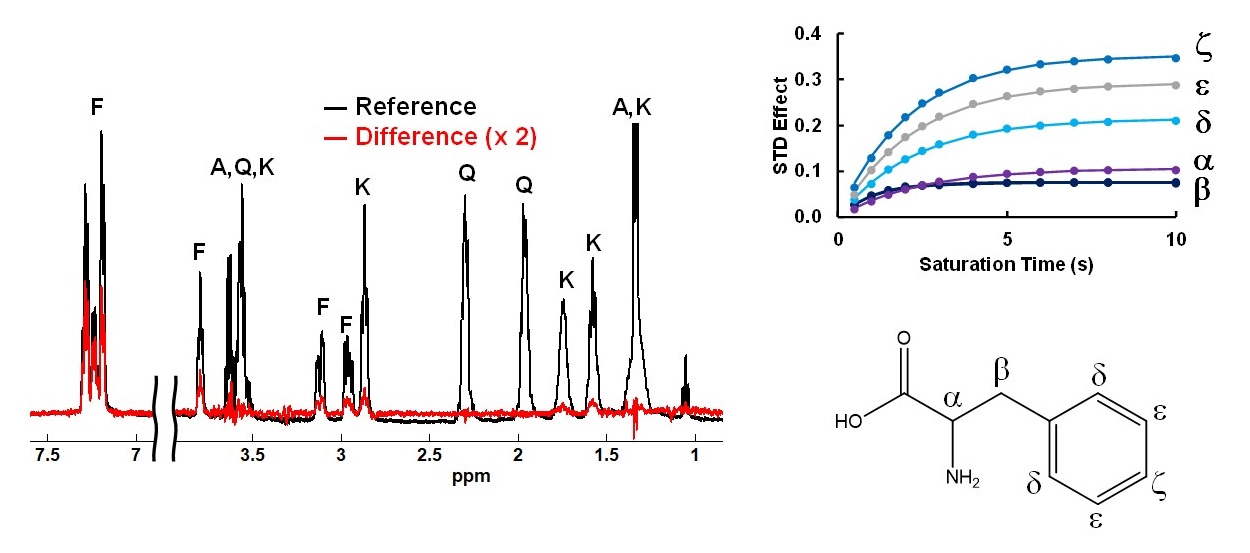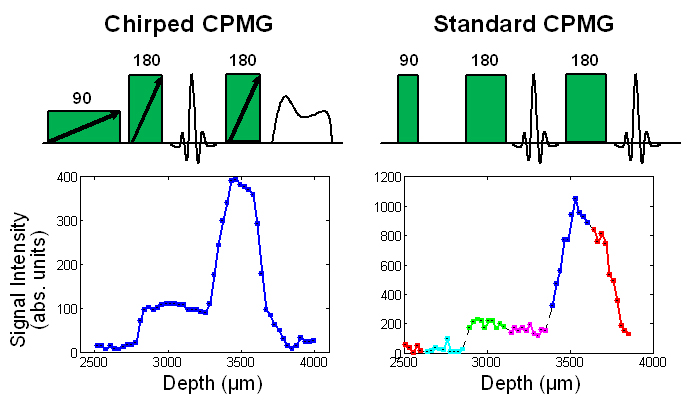

RESEARCH PROJECTS

Saturation-Transfer Difference (STD) NMR has been widely used to screen small molecules for binding to protein targets. Because this is a ligand-detected technique, there is no requirement for the receptor to be observable by solution-state NMR, so we have used this technique to study small molecules interacting with the surface of polystyrene nanoparticles. STD-NMR can also be used for epitope mapping - determining which part of the ligand interacts more strongly with the receptor surface.
H. Xu, D. Lustig and L. B. Casabianca, "13C Saturation-Transfer Difference (STD)-NMR Experiments Using INEPT Polarization Transfer," Appl. Magn. Reson. (2020) in press.
Carbon chemical shifts in curved aromatic systems such as carbon nanotubes or bowl-shaped molecules such as corannulene are influenced by the curvature of the system as well as other factors including Knight shifts and differing ring currents due to five-membered rings. We have used a 54-carbon circumcoronene analog to separate out the changes in chemical shielding that are due to curvature of the system alone. We have also examined how the Nucleus Independent Chemical Shift (NICS) chances as a function of curvature. This has applications in analyzing the chemical shift changes of a molecule that binds to the surface of a curved structure such as a carbon nanotube.
L. B. Casabianca, "Effect of Curvature on Carbon Chemical Shielding in Extended Carbon Systems," J. Phys. Chem. A (2016) 120:7011-7019.
Dissolution Dynamic Nuclear Polarization (DNP) has the potential to increase the signal-to-noise in NMR experiments by several orders of magnitude. DNP relies on the transfer of polarization from an unpaired electron to nearby nuclei. The unpaired electron is usually introduced into the sample as an exogenous free radical that is dissolved in a glassing solvent along with the compound to be analyzed. One popular DNP polarizing agent is 1,3-bisdiphenylene-2-phenylallyl, or BDPA. BDPA is a large aromatic molecule and is insoluble in water. We have shown that by incorporating BDPA into organic nanoparticles of polystyrene, we can achieve DNP enhancements of water-soluble analytes in pure water, without the need for a glassing co-solvent. Our HighlY-effective Polymer/Radical beads (HYPR-beads) have potential as inexpensive polarizing agents for water-soluble analytes, as well as model nanoparticles in DNP studies.
Y. Zhang, P. J. Baker and L. B. Casabianca, "BDPA-Doped Polystyrene Beads as Polarization Agents for DNP-NMR," J. Phys. Chem. B (2016) 120:18-24.
Single-sided NMR scanners are useful for measuring properties such as proton density or relaxation time as a function of distance for samples that are too big to be placed in the bore of a standard NMR magnet. A spin-echo sequence such as the CMPG pulse sequence is often used in these measurements in order to increase the signal-to-noise achievable per scan. We have shown that by replacing the hard pulses in a CPMG sequence with frequency-swept (chirp) pulses, a larger field of view can be excited in a single measurement. This reduces the need for multiple measurements to be made with the sample at a different position for each measurement.
L. B. Casabianca, Y. Sarda, E. Bergman, U. Nevo and L. Frydman, "Single-Sided Stray-Field NMR Profiling Using Chirped Radiofrequency Pulses," Appl. Magn. Reson. (2015) 8:909-919.